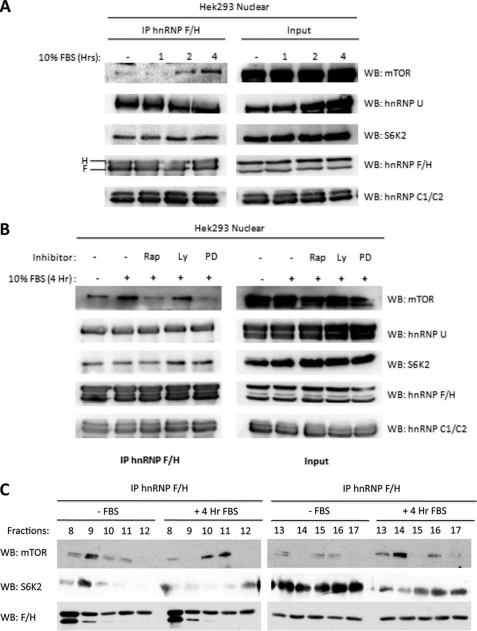FIGURE 4.
Interaction of hnRNPs with mTOR but not S6K2 is regulated by growth factors. A, interaction of mTOR, but not S6K2, is regulated by serum withdrawal and stimulation. Hek293 cells were grown to 70% confluency followed by serum withdrawal for 24 h. Serum was reintroduced at a final concentration of 10% (v/v) for 1, 2, and 4 h, respectively. Nuclear fractions were obtained, and each sample was used in affinity purification of hnRNP F/H. B, interaction of hnRNPs with mTOR, but not S6K2, were inhibited by specific PI3K and mTOR pathway inhibitors. Hek293 cells were grown to 70% confluency and serum-starved for 24 h. Prior to serum stimulation, the starved cells were treated with rapamycin (Rap, 50 nm), LY 294002 (LY, 20 mm), and PD 098059 (PD, 10 mm) for 30 min. After 4 h of serum stimulation, the cells were harvested and nuclear fractionated. hnRNP F/H was affinity-purified from nuclear fractions, and the co-precipitated proteins were analyzed. C, distribution of the mTOR-S6K2-hnRNP F complex integrity in gel filtration in response to serum withdrawal and readdition. Gel filtration-derived fractions of serum-starved MCF7 cell lysates were incubated with antibodies against hnRNP F/H, followed by Western blot (WB) analysis of S6K2 and mTOR. IP, immunoprecipitation.

